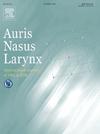台湾儿童气管切开术患者再入院及出院后死亡率:一项为期一年的人群队列研究。
IF 1.5
4区 医学
Q2 OTORHINOLARYNGOLOGY
引用次数: 0
摘要
目的:分析小儿气管切开术患者出院后1年内的再入院率和死亡率。方法:资料取自台湾全民健保研究资料库。结果:共纳入1911例行气管切开术的患儿。气管切开术后1年,1485例(78%)患儿再次住院,273例(14%)患儿死亡。30、90、180、270和365天的累计再入院率分别为32%、56%、69%、74%和78%。30、90、180、270和365天的累计死亡率分别为2%、6%、9%、12%和14%。在1年随访期内再次入院的儿童明显更年轻(8.3岁vs 9.9岁),较少有外伤或头部损伤的迹象(33% vs 39%),他们的重症监护病房住院时间(38天vs 30天)和住院时间(62天vs 51天)比没有再次入院的儿童更长。多变量分析显示,在1年的随访期间,婴儿(HR = 1.20, 95% CI: 1.01 ~ 1.44)和幼儿(HR = 1.24, 95% CI: 1.04 ~ 1.48)的再入院风险明显高于青少年。在此期间,婴儿、学步儿童、学龄前儿童和学龄儿童的死亡风险明显高于青少年。结论:儿童气管切开术后再入院和死亡的风险较高。本文章由计算机程序翻译,如有差异,请以英文原文为准。
Hospital readmission and mortality after discharge with pediatric tracheostomy: A one-year population-based cohort study in Taiwan
Objective
To analyze hospital readmission and mortality rates within 1 year after discharge with pediatric tracheostomy.
Methods
Data were obtained from Taiwan’s National Health Insurance Research Database. All inpatients aged <18 years who underwent tracheostomy between 2001 and 2019 were identified using International Classification of Diseases codes. All-cause readmission and mortality rates at 30, 90, 180, 270, and 365 days after pediatric tracheostomy were calculated, and factors associated with readmission and mortality at 1 year after tracheostomy were analyzed.
Results
A total of 1911 children who underwent tracheostomy were included. At 1 year after tracheostomy, 1485 (78 %) children experienced hospital readmission, and 273 (14 %) died. The accumulated readmission rates at 30, 90, 180, 270, and 365 days were 32 %, 56 %, 69 %, 74 %, and 78 %, respectively. The accumulated mortality rates at 30, 90, 180, 270, and 365 days were 2 %, 6 %, 9 %, 12 %, and 14 %, respectively. Children who experienced readmission within the 1-year follow-up period were significantly younger (8.3 vs 9.9 years) and less indicated for trauma or head injury (33 % vs 39 %), and they had longer intensive care unit stays (38 days vs 30 days) and hospital stays (62 days vs 51 days) than had those without readmission. Multivariable analysis revealed that infants (HR = 1.20, 95 % CI: 1.01 to 1.44) and toddlers (HR = 1.24, 95 % CI: 1.04 to 1.48) were at significantly greater risk of readmission than were adolescents during the 1-year follow-up period. Mortality risk within this period was significantly higher among infants, toddlers, preschoolers, and school-aged children than among adolescents.
Conclusion
Children at young ages are at greater risk of readmission and mortality following tracheostomy.
求助全文
通过发布文献求助,成功后即可免费获取论文全文。
去求助
来源期刊

Auris Nasus Larynx
医学-耳鼻喉科学
CiteScore
3.40
自引率
5.90%
发文量
169
审稿时长
30 days
期刊介绍:
The international journal Auris Nasus Larynx provides the opportunity for rapid, carefully reviewed publications concerning the fundamental and clinical aspects of otorhinolaryngology and related fields. This includes otology, neurotology, bronchoesophagology, laryngology, rhinology, allergology, head and neck medicine and oncologic surgery, maxillofacial and plastic surgery, audiology, speech science.
Original papers, short communications and original case reports can be submitted. Reviews on recent developments are invited regularly and Letters to the Editor commenting on papers or any aspect of Auris Nasus Larynx are welcomed.
Founded in 1973 and previously published by the Society for Promotion of International Otorhinolaryngology, the journal is now the official English-language journal of the Oto-Rhino-Laryngological Society of Japan, Inc. The aim of its new international Editorial Board is to make Auris Nasus Larynx an international forum for high quality research and clinical sciences.
 求助内容:
求助内容: 应助结果提醒方式:
应助结果提醒方式:


